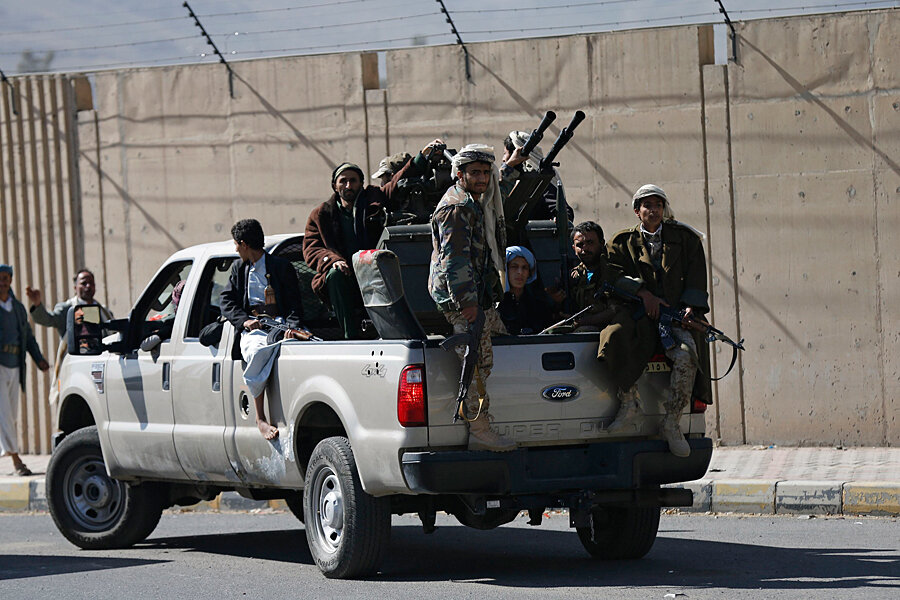Houthis tighten grip on Yemen's capital. What's behind their surge?
Loading...
Houthi militants stood guard at the palace and residence of Yemen’s president Wednesday after two days of fighting in one of the most impoverished and insecure countries in the Middle East.
The fierce fighting has given the Houthis nearly total control over the capital, raising fears of a coup. But the Shiite group stopped short of overthrowing President Abd-Rabbu Mansour Hadi. Reuters says the reason for that decision could be “to keep the enfeebled leader at their mercy rather than claim the burden of seizing power.”
President Hadi, considered a crucial counterterrorism ally by the United States, is believed to be in the capital, but his exact location remains unknown.
Abdel Malik al-Houthi, the Houthi leader, warned in a televised speech Tuesday that the insurgents would take further “measures” if the president failed to carry out the political changes they demanded to increase their power.
The Christian Science Monitor’s Dan Murphy writes that while Mr. Houthi’s speech was short on details, the fact that Shiite rebels now hold Yemen’s capital is bad enough news for Yemen's Sunni majority.
What's also clear is that the gun isn't just a tool of Yemen statecraft at the moment – it's the only tool.
In his speech, Houthi also appeared to obliquely threaten the Sunni tribes in Marib Province, just east of Sanaa, who he claims have been fighting alongside [Al Qaeda in the Arab Peninsula], with the Hadi government's help. If he makes good on that threat, the country's already unstable situation could get a lot uglier. Yemen has suffered years of war and turmoil, but not tipped into an all-out sectarian civil war. That now seems a possibility.
The origins of Yemen’s strife go back hundreds of years. The Houthi rebel group, also known as Ansar Allah ("Helpers of God"), follow a branch of Shiite Islam called Zaidism. The BBC reports that Zaidis make up roughly one-third of Yemen's population and controlled northern Yemen for nearly 1,000 years, until 1962.
In the early 1990s, a Zaidi revival in northwestern Yemen led to the formation of the Houthis. But what started as a cultural movement turned into an armed insurgency by the early 2000s. There have been persistent charges they received assistance from Iran.
The Houthis have been fighting the Yemeni government intermittently since 2004, when the group’s founder, Hussein Badr al-Din al-Houthi, led its first uprising to win greater autonomy for the Zaidi heartland of Saada Province.
Mr. Houthi's family took charge of the movement after he was killed by Yemeni forces in late 2004. They led another five rebellions before signing a ceasefire agreement with the government in 2010. But the Houthis have steadily gained influence since the Arab uprisings of 2011, which led to the overthrow of President Ali Abdullah Saleh in 2012 and a subsequent power vacuum. As The New York Times reports:
Since then, the Houthis have grown into a broad national political movement that is battling a reinvigorated Al Qaeda in the Arabian Peninsula. Supporters were hopeful that the Houthis could tackle rampant corruption and restore the stability that has eluded Yemen since the Arab Spring.
In September, the Houthis took control of the capital and promised radical political changes. The group had held back from directly challenging the president and his government until this week.





